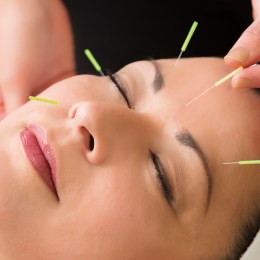The role as a salon, spa or clinic business owner or therapist puts you in a very privileged – as well as potentially difficult – position.
Considering the intimacy generated by hands-on treatments and seeing clients “in the raw”, literally and figuratively, means they will often tell you things they possibly wouldn’t tell partners, family or close friends.
It’s a position of trust to be treasured, but it brings certain responsibilities, such as the need for the utmost discretion, and offering a sounding board without providing “answers” to sometimes volatile personal issues.
There is, however, a vital role you can play, as a purveyor of information about life-changing treatments and services, even if you can’t offer them yourself. After all, as the old saying goes, knowledge is power.
So … let’s talk about sex. The kind that is compromised after a man undergoes treatment for prostate cancer. Ergo, erectile dysfunction. And the distressing possibility of urinal and anal incontinence.
Regardless of whether nerves were spared during surgery or whether the most precise dose planning was used during radiation therapy, nearly all men will experience some erectile dysfunction for the first few months after treatment, if not permanently.
This naturally has a devastating impact on self esteem and relationships.
Up to 18,000 new cases of prostate cancer are expected to be diagnosed in Australia in 2016.
While the five-year survival rate is now 93 percent, many patients have well-founded concerns about the impact of their life-saving cancer treatment.
Last year, Australia’s Therapeutic Goods Administration (TGA) and the US Food and Drug Administration (FDA) approved a new treatment – SpaceOAR – for use in conjunction with radiation therapy in the treatment of prostate cancer.
In the case of low grade prostate cancer, the type of radiation treatment can make an enormous difference to future quality of life for patients, especially in terms of erectile function and continence.
SpaceOAR is an innovative technology that has been proved in numerous clinical trials to protect against collateral damage from radiation to the rectum, the side effects of which can include bleeding, stool looseness or incontinence, which may occur immediately after treatment or later.
The TGA-registered SpaceOAR gel is composed of an inert biocompatible hydrogel – meaning it is 90 percent water – and works by creating a temporary implant between the prostate and the rectum that is present over the period of radiation treatment. It is then gradually absorbed by the body and eliminated through the kidneys.
The gel is injected at the same time and in the same way as the “seeds” for certain radiation therapies.
Performed under anaesthetic, the procedure takes only a few minutes and insertion has a very small risk profile.
The attending doctor can advise patients about the minimal side effects associated with any implant procedure and what conditions would make a patient a good candidate.
In addition to protecting the rectum from the risk of collateral damage and resultant short and longterm side effects, SpaceOAR enables higher – and more effective – doses of radiation to be used safely to treat prostate cancer.
The international experience overwhelmingly supports the benefits of including SpaceOAR in radiation protocols for prostate cancer treatment.
Leading prostate cancer experts at Radiation Oncology Victoria, Northern Sydney Cancer Centre and St George Hospital in Sydney have trialled and endorsed SpaceOAR.
Treatment cost is currently reimbursed for private patients, and the good news for patients treated at Radiation Oncology Victoria – when referred by urologists, patients potentially have access to SpaceOAR whatever their insurance status.
SpaceOAR Liaison Team: 03 8870 3309



